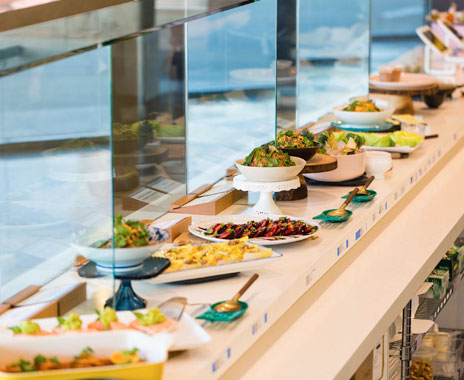There’s nothing simple about selling simple food. That’s particularly true in the helter-skelter world of farm-to-table dining, which is now barreling its way into more fast-casual restaurants.
The local-sourcing revolution is making life difficult for some restaurant entrepreneurs. On the one hand, honest-to-goodness locally sourced food comes at a premium, forcing prices that are often much higher than fast-casual averages. But, on the other hand, consumers are demanding more convenient and affordable access to these local foods.
It’s a dilemma that’s led some operators to cut corners by spinning their brand stories so it appears they’re more farm-to-table than they are.
Noah Ellis is choosing a more honest approach. Ellis is cofounder of Picnic LA, a 40-seat fast casual located across from Sony Picture Studios in Culver City, California, that preaches integrity in fast-casual food.
Few things make Ellis cringe more than coming up with a definition for farm to table.
“We don’t like to use that term, because all produce starts on some sort of farm and ends up on some sort of table,” he says. Still, when he thinks of Picnic LA’s definition for its farm-to-table practices, he says, “I think of seasonality and small, family farms.”
Farm to table is an ethical world where even basic ingredients like onions or celery are supposed to be sourced by a local farmer. But it’s also a world where that same bag of onions or celery can cost four times more at the farmer’s market than a bag bought from a broadline distributor.
That’s why farm-to-table restaurants, even at the fast-casual level, are pricey. A lunch entrée with a couple of sides and a drink fetches about $17 at Picnic LA. That’s about $12 more than lunch at McDonald’s and $7 more than lunch at Panera Bread.
Ellis knows all too well that’s what is keeping more customers from coming in the door.
“The really frustrating thing is having to compete on price with other restaurants who don’t do the things we do,” says Ellis, a 32-year-old native of Buffalo, New York, who started in the industry as a dishwasher at age 14. “Our lives would be much easier if we just followed the market instead of trying to lead it. You have to have a very strong ‘true north’ not to give in.”
One major issue in the local-sourcing world today is menu honesty. In an effort to ride the coattails of the farm-to-table trend, many restaurants aren’t completely honest about where their food is coming from. A recent Tampa Bay Times investigation found a number of such restaurants in South Florida that made inaccurate claims about their sourcing partners. Ellis says he’s seen this dishonesty first-hand, even from some of the restaurants in Picnic LA’s neighborhood.
Since the restaurant opened in November, it’s been an education for consumers and for its three owners—Ellis, Brad Zions, and Eliot Silver. Millennials love the food, but are a bit put off by the prices, Ellis says. And the three owners are still trying to develop a marketing strategy that very simply explains to consumers precisely why they have to pay somewhat more for such pristine food.
“Running a restaurant and trying not to use any commodity products is a real challenge,” he says. The restaurant doesn’t want to overstate its mission, nor does it want to bore consumers with it. But, unlike some other restaurants, it doesn’t even set out a chalkboard that updates customers on the names of the farms with which it does business.
“It’s a daily discussion we have about how to best communicate who we are,” Ellis says. “It’s hard to get caught fudging if you don’t make a lot of claims.”
Ellis hopes to open another Picnic LA location in Southern California within the next year, and ultimately hopes to have 10–13 additional stores.
The path won’t be simple. Few things are more difficult than running a successful farm-to-table restaurant, says Suzanne Podhaizer, owner of Farm-to-Table Consulting & Design. She formerly owned such a restaurant in Montpelier, Vermont, and now consults others on how to do it.
“Success or failure is often based on how you share the story of the farms,” she says of the farm-to-table world.
Some restaurants use posters. Some use table cards or write it on the menu. Others send newsletters to customers that describe a different farmer’s story each week.
But there’s no universal solution, Podhaizer says. Some customers simply want to enjoy the food, while others, she says, “want to know the names of the cows.”
Picnic LA is still trying to figure out how to tell its own farm-to-table story. “We are early enough in this story that we don’t know how the story ends,” Ellis says.






